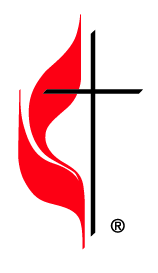Self Harm and Teens

Self Harm is a major issue in the lives of your teens. That is, unfortunately, not news to anyone who cares about and works with this group; however, with all of the resources available, where do you turn? This list is a place to start, but before you engage with these resources, there is one thing to note.
Prior to roughly the year 1998, self-harm was almost exclusively understood as a psychotic behavior. After that, we see a rise of books and resources describing this behavior as a maladaptive coping mechanism. As you look beyond this list for other resources, keep in mind that books written prior to 1998 may not be discussing self-harm as the same behavior intended here.
Books
A Bright Red Scream: Self-Mutilation and the Language of Pain
by Marilee Strong
Written by a journalist, this book is well-researched without getting bogged down in nuanced theories of psychology. As an observer, and not a self-harmer, Strong draws from interviews with medical professionals, adults who work with youth, those who actively self-harm, and others. A good introduction to what is self-harm, and why someone might do it.
The Scarred Soul: Understanding & Ending Self-Inflicted Violence
by Tracy Alderman
An older book that emerged just as self-harm was being noticed and understood as we do today. This was widely affirmed as one of the best self-help resources available. This book primarily addresses those who struggle with chronic, significant self-harm, and may be less appropriate for one who is experimenting or is causing only superficial damage.
When Your Child is Cutting: A Parent’s Guide to Helping Children Overcome Self-Injury
by M. E. McVey-Noble, S Khemlani-Patel, F. Neziroglu
This book declares parents to be the primary audience, although youth workers will find helpful strategies for communicating with youth who self-harm. Also serves as a basic introduction to the what/why questions people ask when first learning about self-harm.
Bodily Harm: The Breakthrough Healing Program for Self-Injurers
by Karen Conterio and Wendy Lader
Written by the founders of S.A.F.E. Alternatives (see website list below), this is an authoritative book for defining self-harm, understanding some of the causes, and promoting treatment. Written in 1999, it reflects older thoughts on cultural impact and treatment.
Helping Teens Who Cut: Using DBT Skills to end Self-Injury
by Michael Hollander
This is the recent (2017) second-edition of a popular book to help parents understand therapeutic treatment of self-harm. The book thoroughly explains and promotes dialectical behavior therapy as a way to treat self-harm. There are other ways to treat self-harm, but they are not explained in this book. Other chapters are more general, and about how to interact with youth who struggle with self-injury.
Websites
The Cornell Research Program on Self-Injury and Recovery
With sections for those who self-harm, parents, friends, youth workers, and therapists, this incredibly comprehensive site has a wealth of information. Good for both beginners and those who have studied or worked with self-harm for years. It also includes many links to other resources, including tools and assessments. Also has videos and interviews.
S.A.F.E. Alternatives (Self Abuse Finally Ends)
With a history stretching to the 1980s, SAFE was one of the first to specialize in self-harm treatment and awareness. They remain a key name among those who work in this field. Their website includes information about treatment, hotlines, and resources. Their resource list is at least a decade old.
Self-Injury Outreach & Support
As a site intentionally about outreach, here you can find fact sheets, personal stories, coping tips for both loved ones and those who self-harm. They also have an extensive resource list, including additional websites and ongoing research.


